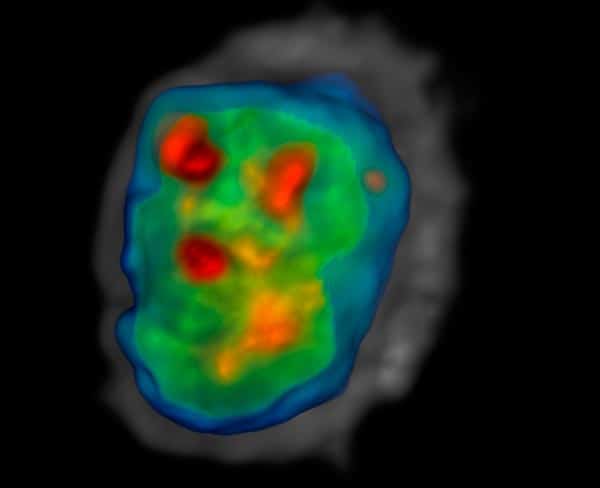
The US is setting up a dozen new research centres to explore novel ways in which physics can be applied to the treatment of cancer. The centres are being funded by the National Institutes of Health (NIH) as part of a five-year project, worth a total of $22.7m in its first year. Each centre will bring a non-traditional approach to oncology by considering the physical properties and dynamics of cancerous cells.
“We will aim to inject some radical new thinking into the subject – opening a completely new front on the ‘war on cancer’,” says Paul Davies, director of the BEYOND Center for Fundamental Concepts in Science. Based at Arizona State University (ASU), BEYOND is one of the 12 centres that will receive NIH funding – it will get $1.7m for each of the first two years. BEYOND will also host a new “cancer forum” to brainstorm ideas inspired by the physical sciences and physics in particular.
Physics at the core
The concept of applying physics to the diagnosis and treatment of cancer is not new. Procedures such as magnetic-resonance imaging, computed tomography or hadron therapy, for example, are already well established technologies in oncology departments. However, this latest project is seeking to go further by bringing physics right to the heart of medical research.
“What is new about this initiative is that it is going to be tackling the root causes of cancer on a conceptual level,” says Davies. “Orthodox cancer research is in thrall of the mantra ‘follow the genes’ and conventional therapies focus on chemicals to fight cancer. But cancer cells are physical objects with properties such as elasticity, adhesion forces, electric potentials and other parameters that physicists understand. I believe we should not treat cancer as a disease to be cured, but as a manifestation of life’s extraordinary exuberance to be managed and controlled. Our approach will be complementary to the gene-centred and chemistry-centred approaches: we need to integrate all three.”
“What is new about this initiative is that it is going to be tackling the root causes of cancer on a conceptual level.” Paul Davies, ASU
The work at the BEYOND centre will also be augmented by a major experimental programme at ASU that will focus on 3D imaging of cancer cells, monitoring metabolic changes of single cells using microfluidics, and studying physical changes in cancer cells using atomic-force microscopy. Staff at ASU will also carry out computer modelling of tumour growth. Experimental samples, such as cancer cells and tissues, will be provided and characterized by collaborators at the Fred Hutchinson Cancer Research Center and the Mayo Clinic.
Holistic medicine
The cancer “breath test” recently reported on physicsworld.com (see “Breath-testing for cancer using gold”) is an example of the type of research that may be involved in the new initiative. Hossam Haick, a researcher at the Israel Institute of Technology who was involved in that breakthrough, says that he is excited by the new US project. “The physics and molecular electronics viewpoints on the cancerous species will help understanding the dynamic process of the cancer as well as the related deficiencies in the signal transfer within the cell,” he says.
Haick believes that oncology will benefit from a more unified application of the natural sciences, particularly in developing treatments that target cancerous cells with high precision. “In this endeavour, the physicists’ eyes will require the chemists’ hands and biologists’ perception,” he says. Haick believes that, given the fundamental nature of the new approach, it will take at least 10 years before reliable new technologies emerge.
The other 11 institutions to be funded by the NIH initiative are Cornell University, Johns Hopkins University, H Lee Moffitt Cancer Center and Research Institute, Massachusetts Institute of Technology, the Memorial Sloan–Kettering Cancer Center, Northwestern University, Princeton University, Scrips Research Institute, the Texas Heath Science Center, the University of California at Berkeley and the University of Southern California.




